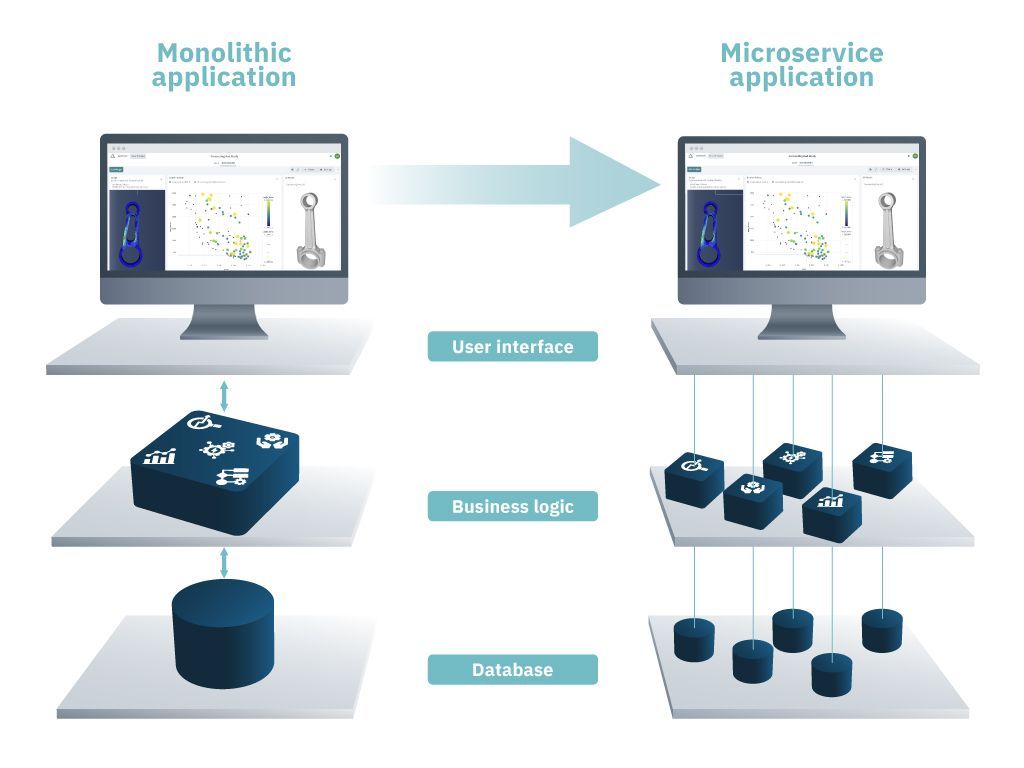New generation of ESTECO digital engineering solutions also foreseen by Gartner’s technology trends
Written by Luka Onesti
18 November 2022 · 4 min read

Digital transformation is rapidly taking over all aspects of our lives. This also has an impact on engineering applications that are deeply rooted in this business revolution. In fact, companies need to invest in digital engineering technologies to address the increasing product complexity driven by the demand for higher product performance, quality and customer expectations.
CEOs know they must accelerate the adoption of digital business and are seeking more direct digital routes to connect with their customers
To be competitive and stay on the edge of new digital engineering challenges ESTECO has identified business and scientific disciplines where to invest in the coming years. These find proof in some of the latest Gartner’s top strategic technology trends that will drive digital business and innovation over the next years.
Artificial Intelligence (AI) Engineering for enhancing design optimization
According to Gartner, by 2025, the 10% of enterprises that establish AI Engineering best practices will generate at least three times more value from their AI efforts than the 90% of enterprises that do not.
Today every high-tech engineering challenge seems related to the AI topic such as Machine Learning (ML) and Deep Learning (DL). Designs become more complex and the market demands for shorter and shorter development cycles.
This has also an inevitable impact on simulation-driven product development and its efficiency. In this scenario, ML and DL can be the solution to reduce the simulation turnaround time, minimize prototypes, make smarter use of computing resources, and speed up the whole design process. At ESTECO, we continue to invest in this direction with our extensive library of design exploration and optimization algorithms, ML-based Response Surface Models (RSMs), and decision-making algorithms which are embedded in our VOLTA and modeFRONTIER software solutions.
However, identifying the right strategy for your design problem can take a certain level of knowledge and expertise. This is why, along with the traditional manual approach which requires setting all parameters to build your own optimization strategy, you can run our algorithms in the autonomous one click mode. This is a smart solution, which allows users to balance the time it takes to find the optimal solution with the number of design iterations. Plus, it is suitable for expert and non-expert users, depending on your time or expertise at hand.
ESTECO VOLTA Planner environment: run ESTECO algorithms in autonomous mode
Hyperautomation for algorithm-driven business processes
Gartner forecasts that by 2024, diffuse hyperautomation spending will drive up the total cost of ownership 40-fold, making adaptive governance a differentiating factor in corporate performance.
Hyperautomation is at the core of our technology. Simulation process workflow automation has been the cornerstone of all our products since our early days. Over the years, we have expanded its usage to different levels.
More than 20 years ago, ESTECO started to tackle multi-objective optimization by providing seamless integration with any CAD/CAE application into modeFRONTIER’s automated workflow. Then this has evolved with the introduction of Business Process Management (BPM) capabilities, which allowed for incorporating the management of human tasks along with simulation workflow automation. Thanks to BPM in VOLTA, companies move from a task-oriented to a process-driven approach. They can map engineering design processes with Business Process Modeling and Notation (BPMN 2.0) workflow editor, and then execute and monitor human and simulation service tasks.
VOLTA Modeler environment: map and standardize engineering design processes
By adopting industrial standards like Business Process Modeling and Notation (BPMN), Decision Model and Notation (DMN), and Business Process Simulation (BPSim), we are now fully embracing the low-code or even no-code workflow automation paradigm.
This is where the integration of modern AI and ML techniques will help to map and automate the drawing of company-wide operational process workflows. These will be then automatically simulated, validated and optimized with event-driven or agent-based solver architectures. In the end, the final objective is to achieve a proper Robotic Process Automation (RPA) of business workflows that will bring together repetitive algorithmic tasks with human-in-the-loop decisions.
Cloud-Native Platforms for empowering collaborative simulation-driven design
Cloud-native platforms are now listed as one of Gartner’s Top Technology Trends. Indeed, they expect that by 2025, cloud-native platforms will serve as the foundation for more than 95% of new digital initiatives — up from less than 40% in 2021.
Many companies are currently investing into private cloud infrastructure or using public cloud systems to centralize the management of their applications and consequently reduce costs. We started some years ago with our first Software as a Service (SaaS) product Cardanit, a modern web and mobile platform for Business Process Management. Lately, even our VOLTA enterprise platform has adopted a new microservice architecture ready to be deployed standalone in a private data warehouse infrastructure or shared in a public cloud environment.

While a traditional monolithic architecture guarantees good performance, it isn’t usually well suitable for a large number of geographically distributed concurrent users. The new cloud-native installation of VOLTA enables organizations to handle the growing demand of computational resources without impacting performance or availability.
This is just the beginning of our journey to bring the complete ESTECO product portfolio on any private or public cloud (such as Google Cloud, Amazon Web Service, Microsoft Azure). Our applications are becoming more and more scalable, elastic, easy to install and completely transparent to customers.
Technology trends like AI Engineering, Hyperautomation, and the Cloud-native paradigm are only some of the many keys that are driving the birth of the next generation of our products portfolio. We are now willing to model every enterprise, social or human activity by offering a complete cloud solution for multidisciplinary simulation, design optimization, decision-making and business process management available for everybody.
Overcome silos and make the best of simulation-driven product development
Enabling the digital thread with VOLTA SPDM
Overcome silos and make the best of simulation-driven product development
Enabling the digital thread with VOLTA SPDM
Overcome silos and make the best of simulation-driven product development


